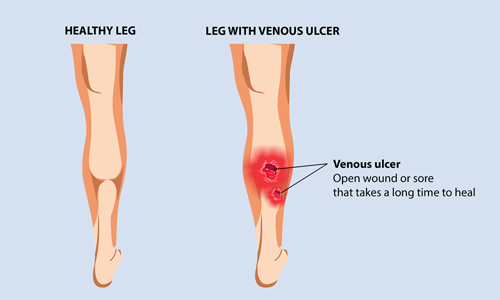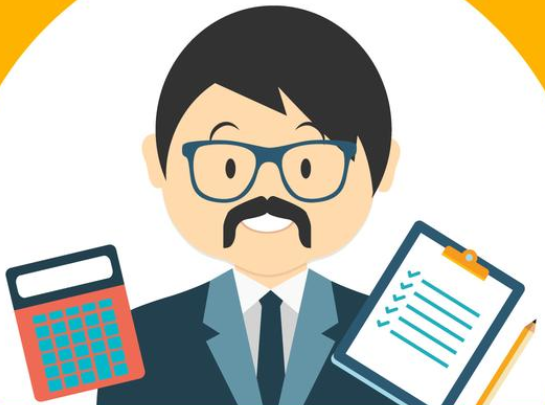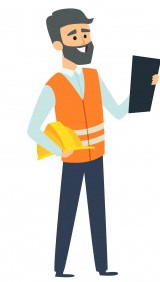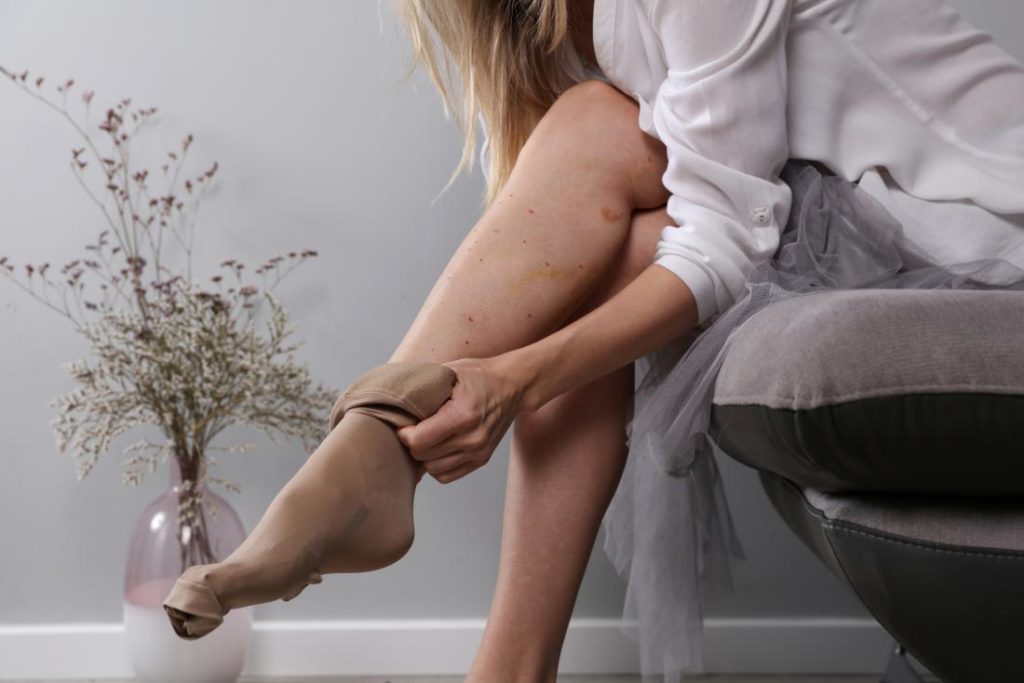Standing or Sitting All Day? Take some Load off Your Lower Limbs
If you’re like many adults, standing or sitting for long periods is simply unavoidable. Bank tellers, assembly line workers, pharmacy technicians, salespeople, cooks, flight attendants, and others may stand or walk for hours on end. Drivers, office workers, accountants, managers, and others may sit in one stationary position for most of the day.
Here’s what we found for the best compression socks for standing all day:
Thankfully, if you work in one of these positions, one easy solution can spare your limbs from a range of discomforts, including:
Leg fatigue
Swelling
Aching
Varicose veins
Blood clots
What can you do to prevent or relieve the effects of standing or sitting all day ? Have you ever heard of ergonomics?
Those weird-looking, expensive chairs are not a simple solution. You don’t need fancy equipment. And you don’t have to get a new job. (Good news, because it would be difficult to find employment that lets you give your legs a break every fifteen minutes. )
Allow me to introduce you to the simplest possible solution— compression socks.
Compression Socks Reduce the Effects of Standing or Sitting All Day
To find out why compression socks work, let’s get into the science of things.
VEIN POWER
Your veins are designed to channel blood in one direction, toward your lungs for an oxygen refill, by way of your heart.
Spaced along the vein walls are valves, each formed by a pair of flaps of tissue that act like swinging doors. To pass, blood pushes against them and the valves fling open.
Then, there’s gravity. Gravity is always present, an opposing force that pulls everything downward, including your blood. Still, in healthy veins, the valves guard against blood reversal through a partnership with muscles. In other words, muscles work to keep the valves shut, and gravity loses the battle. The blood gets to the heart and gets oxygenated.
The Drawbacks of Gravity When You Are Standing or Sitting All Day
Everything’s fine until your calf muscles get tired.
Think about it: Deep veins are powerhouses, responsible for returning 90 percent of the blood in the legs to the heart. They cooperate with the calf muscles, shunting blood through the valves and shutting the valves when the muscles relax.
But deep veins get tired, just like you would if you had to pump iron for hours. Periods of increased volume overstretch the vein walls and weaken their valves. Thus, the stage is set for poor circulation, otherwise known as venous insufficiency.
Symptoms include leg swelling, aching, fatigue, varicose veins, slowed metabolism, muscle tension, cramping, leg clots, and venous ulcers.
Varicose Veins
Besides the deep veins, you have other leg veins that lie just beneath your skin. These superficial veins must also contract, working in tandem with muscles and deep veins. When any part of the system—the deep veins, the calf muscles, or the superficial veins—is overwhelmed, the blood struggles to advance and builds up inside the veins.
Superficial veins work harder to deal with the abnormal surplus of blood left by the deep veins and consequently become gnarled and swollen.
When superficial leg veins are strong and healthy, they are not very noticeable. However, in their overburdened state, they morph into dark blue and purple bulges, called varicose veins. Accompanying varicose veins may be leg heaviness, muscle aches, cramping, and itching.
Symptoms worsen with prolonged standing because this type of vein damage results from the pull of gravity, which increases when legs are in a vertical position (from standing) all day.
Lagging Metabolism
Slowed metabolism is another consequence of standing all day. Muscle contractions use energy that your body may have to take from stores of fat. They also use the hormone insulin, which supplies blood glucose to your cells, providing them with vital energy.
Standing or sitting in one position for a long time slows this metabolic process. As a result, you are at higher risk of diabetes, cardiovascular disease, and unhealthy weight. Slow circulation also induces lethargy and brain fog.
Tight Muscles
The large muscles in your legs and hips stabilize your posture and enable walking. Excessive sitting or standing makes them tight and weak, fostering muscle strains, tears, and falls.

If you work at a desk job, tight muscles can cause permanent issues over time, such as being round-shouldered and chronically stooped. Experts say prolonged sitting or standing—more than two hours at a time—can strain your neck, shoulders, and back, sparking muscle aches and painful cramping.
Leg Clots
Sluggish blood is susceptible to producing leg clots, medically called “deep vein thrombosis,” abbreviated DVT. Blood clots occur when a semisolid mass of blood forms in your veins.
Usually, the clots cling to vein walls, but they can dislodge and travel. If a clot obstructs an artery to the heart or lungs, it can cause a fatal blockage.
Those with the highest risk of DVT are smokers, inactive seniors, pregnant women, people on bed rest, patients recovering from certain operations, and women on birth control pills or hormone replacement therapy. Additionally, leg clots can form during long drives, bus trips, and flights of four hours or longer.
Venous Ulcers
Venous ulcers are another serious consequence of prolonged sitting and standing. Poor circulation keeps the skin from receiving essential oxygen and nutrients, making it prone to thinning. Moreover, faulty veins release fluid into neighboring tissues, leading to skin breakdown. Over time, a leg wound, known as a “venous ulcer,” can develop. This type of sore is slow to heal.

Venous ulcers are most prevalent in sedentary seniors, especially women. The risk increases in those who smoke, are overweight, have varicose veins, and a history of DVT. Common symptoms are itching, burning, swelling, dryness, and rash around the skin lesion. Even worse, venous ulcers can become infected.
Edema
When veins don’t work correctly, the fluid within them seeps into adjacent tissues. This condition, called edema, results in swollen legs and feet.
Edema not only results from extensive periods of standing and sitting all day, but also from medical conditions. Therefore, you should see a doctor if fluid retention occurs often.
To check for edema, the doctor presses a finger against the swollen area for a few seconds. If the pressure leaves an indent, you have “pitting edema.”
At that point, a doctor may order diagnostic tests to determine the cause, such as kidneys or heart trouble. Pregnancy can also trigger puffiness, although it often resolves after childbirth.
That’s where compression socks (or compression sleeves) come in.
Socks Science (aka How Compression Works)
So, all these leg issues paint a grim picture — varicose veins, leg swelling, tight muscles, blood clots, venous ulcers, and lagging metabolism. Whatever the root of the problem, compression socks can help you get your swelling under control.
How? Compression technology.
Compression socks (and stockings) befriend overworked veins by improving circulation.
Compression socks have two unique features:
- Specialized weave: This knit applies gradient tension, highest at your ankles, and gradually lessening toward your knees or thighs. The pressure variance gently squeezes your leg veins without constricting them, pushing blood through their valves.
- Stretchy fabric: High in-elastic, this material activates muscle contractions and propels blood toward your heart.
These features combine with the power of your veins and muscles to support your circulatory system, thwarting fluid leakage. Since your blood flows faster, it speeds nutrients and oxygen to your tissues. Waste products are eliminated quicker, too.
As a result, your veins are less prone to burnout. As an added appeal, compression socks are available in attractive designs, unlike post-surgical tights.
COMPRESSION & PRESSURE SOCKS–The Advantages
Compression legwear is designed to be therapeutic. The level of pressure exerted varies according to the weave of the fabric of each style.
Sock manufacturers measure pressure strength in millimeters of mercury, abbreviated mmHg.
Here are the sock pressure grades commonly used, along with the degree of support they provide:
- 8-15 mmHg – Mild
- 15-20 mmHg – Moderate
- 20-30 mmHg – Firm
- 30-40 mmHg – Extra Firm
The best compression socks for preventing problems have a mild compression level. However, if you already have issues from standing and sitting, a 20-30 mmHg pressure level may give you the support you need. Such firm support alleviates many of the problems linked to venous insufficiency and low mobility.
Compression stocking styles also vary by coverage. They are available as:
knee-highs,
thigh-highs,
pantyhose,
sleeves,
and toe-less.
Men and women consider knee-high compression stockings to be the easiest to apply and the most comfortable to wear.
Compression hosiery also varies by fabric coverage, available as knee-highs, thigh-highs, pantyhose, and sleeves, made without feet.
Knee-high compression socks are the easiest to apply and the most comfortable to wear, favored by both women and men.
There is a wide range of selection compression socks available for men and women. Choose compression socks that fit well. Good news is you can choose a pair depending on pressure level, purposes, style, budget, quality – beautifully stitched seams, breathable material, ability to absorb shock.
JOB SPOTLIGHTS
With certain careers, long periods of sitting and standing comes with the territory. If you are in one of these industries, take note! Even if you don’t work, sharing this vital information can help your friends, family, and other people you care about to avoid the problems associated with prolonged sitting and standing.
Seated Occupations
Office Employees
Secretaries, receptionists, and accountants, and customer service representatives may spend their shift seated in an office or call center. Besides wearing compression socks, employees may benefit from setting an hourly phone alarm to remind themselves to get up, stretch, and move around.

When vacating the desk isn’t feasible, perhaps they can stand up and march in place. For more subtle movement, some periodically lift their legs and rotate their ankles while talking on the phone. Posture matters too. Sitting up straight can avert chronic pain in the neck, shoulders, and back.
Truck Drivers

The US Department of Transportation allows truck drivers to work 11 hours a day. By law, a trucker must take at least one 30-minute break every eight hours behind the wheel. Driving for eight hours straight can be disastrous for circulation! Truckers often notice problems with their legs once issues arise.
From pressing the gas pedal for hours on end, truckers become particularly susceptible to plantar fasciitis, a ligament strain of the sole that causes sharp pain.
Wearing compression socks at the right compression level can prevent problems before they start. Also, truckers should consider pulling off the road every two hours to walk around, or perhaps inside a store during unpleasant weather.
Taxi Drivers

Full-time cabbies have long workdays, lasting between 8 and 12 hours. State laws regarding mandatory breaks vary. For example, in certain areas, cab drivers are exempt from obligatory rest period laws altogether.
Added to that, operating a cab isn’t the lucrative job it was years ago due to competitors, such as Uber and Lyft. That’s why some taxi drivers work such long shifts.
The socks can help circulation, and drivers can motivate themselves in fun ways to take breaks between customers.
For instance, they can wear a pedometer also (called a fitness, activity, or step tracker) to monitor their daily activity. They can set a daily goal and compete against other drivers or family members to increase their total steps.
Standing Occupations
Flight Attendants
Flight attendants stand a lot and work in an environment of frequent pressure change as their flights take off and land. They commonly complain of swollen and aching legs. They have a high risk of developing DVT. Therefore, wearing compression hose can be lifesaving for cabin crews.
In addition to being stylish, compression stockings can provide warmth on a chilly airplane.
Teachers
Teaching is especially hard on the legs. It requires lots of daytime standing and sitting much of the night to prepare lessons and grade schoolwork. Teachers enjoy the variety of fun sock designs available.
Retail Employees
Sitting down is a rare luxury for salespeople, cashiers, and stock clerks. Retail workers over age 50 are especially vulnerable to leg edema, varicose veins, and foot pain. Even young people with robust blood circulation are subject to leg fatigue.
Healthcare Professionals

Healthcare covers a broad job category, including medical assistants, nurses, doctors, pharmacists, home health aides, and medical technicians. In hospitals, nurses routinely work 12-hour shifts. Nursing is a tough job, and it’s hard to give focused and compassionate care when your legs are suffering.
Compression socks can help, as well as resting in a comfortable break room. If possible, nurses should elevate their legs for at least fifteen minutes every three or four hours.
Food Service Staff
The territory of food and hospitality service staff is often limited to a short walking radius. Examples are cooks, chefs, dishwashers, baristas, bartenders, bakers, and counter servers. For all these occupations, gravity takes its toll on leg veins. Proper footwear is critical for these long hours.
Factory Employees

Often, assembly line workers are relegated to prolonged standing on concrete, a floor surface that can be tiring on your legs. Fatigue contributes to low productivity and high absenteeism.
Workers often suffer from back and knee pain, are tired legs, varicose veins, swollen ankles, and sore feet.
Factory workers have to work hard to take care of themselves. Maybe a 15-minute break and some performance-boosting socks?
Finding The Right Compression Sock
Materials
Compression socks and hosiery comes in a range of fabrics, including nylon, cotton, spandex, microfiber, acrylic, and polyester. Among the most comfortable materials are spandex and nylon.
ComproGear stockings are an effective blend of 35 percent spandex and 65 percent nylon.
Spandex is best if you are looking for elasticity and flexibility. Nylon is moisture-wicking, quick-drying, durable, and soft. Heat makes your veins dilate, releasing warmth through your skin to cool your body. As a result, edema is more prevalent in hot weather. Both nylon and spandex are breathable, an essential quality if you want to avoid edema in summer.
Taking Care of Your Compression Socks

Once you have selected the right material, you must take proper care of your pair of compression socks if you want them to do their job.
First, put your socks on in the morning, when your legs are least swollen.
Remove them at bedtime to allow your circulation to normalize when your legs are elevated during sleep.
Second, don’t put your socks in the washer or dryer. Doing so can damage the fabric and reduce pressure. Hand washes your pair by soaking them for a few minutes in a mixture of cold water and mild soap. Rinse them thoroughly in clean water, then gently squeeze the fabric to remove excess water. Hang the socks in a well-ventilated area to air-dry.
The Best Compression Socks
If you try ComproGear socks, your legs will be less prone to swelling, bulging veins, aching, heaviness, muscle tension, blood clots, and venous ulcers. Whether you spend most days on your feet or sitting down, graduated support hose will boost your circulation, and consequently, your vitality. Avoid vein burnout, and enjoy your life more!
NOTE – The material presented here is not intended to replace professional healthcare advice. If you have pitting edema or other circulatory problems, consult a physician before trying compression socks.
This page last updated November 5, 2022
